
We set off from 1 degree Marina at Sentosa on a boat. Luckily, the owner have a rubber dingy, thus avoiding an amphibious landing.
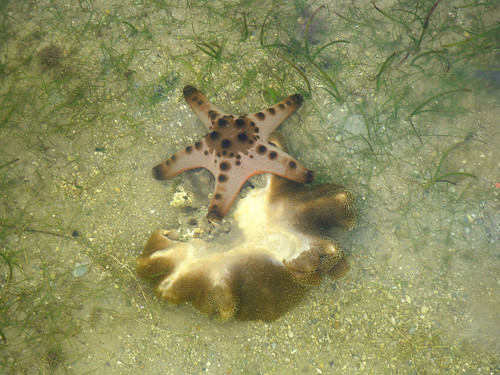
There were really so many knobbly seastars (Protoreaster nodosus) here with many varying colouration, knobs and patterns. RY found this which was feeding on a soft coral.
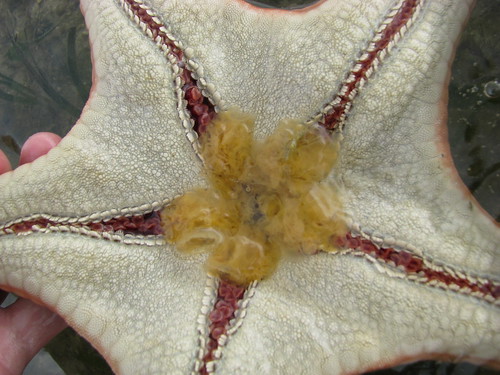
Seastars feed by eviscerating one of their stomachs out their mouth to engulf and digest their prey. I managed to capture one with its stomach extended. It seems like they are also not just carnivores, but we found a few others that were feeding on seagrasses too!
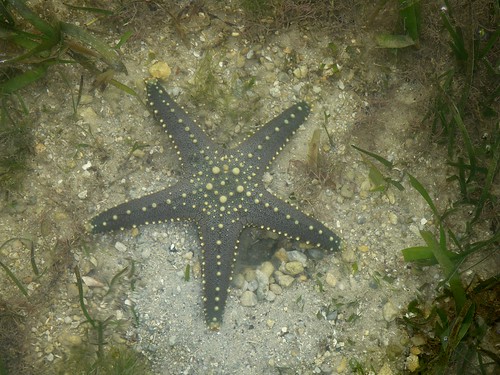
I finally had the chance to see this newly recorded seastar, Pentaceraster mammilatus. As described by some, it looked like a knobbly that have turned over to the dark side~
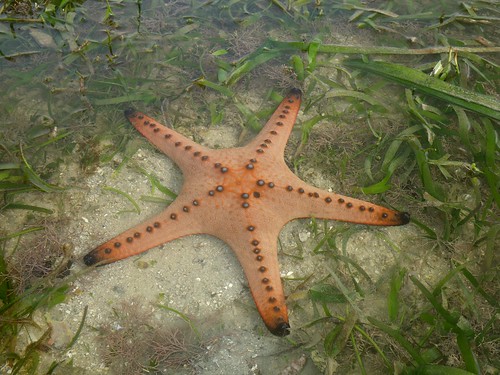
We also found this peculiar star that was highlighted in wildfilms blog last time. To me, it seems like a cross between the knobbly and the Pentaceraster seastar. Who knows? I might just be right~ ^^
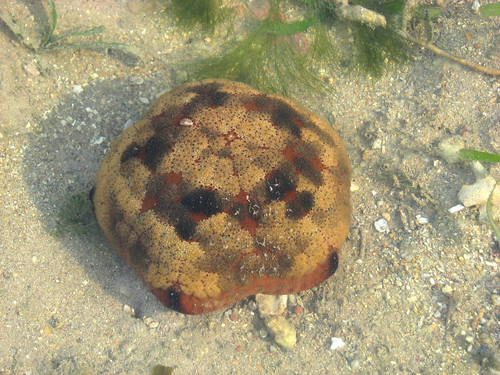
Another star which do not really look like one because of its inflated body. True to its name, the cushion star (Culcita novaeguineae) looks like one that will be a great pillow.
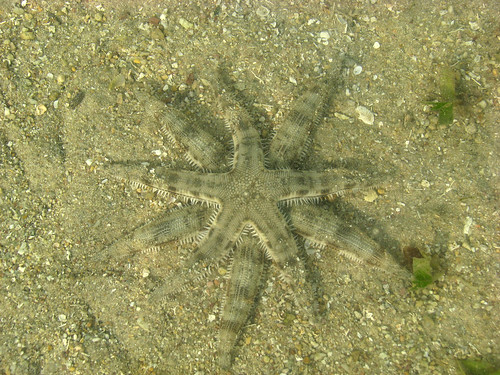
The last species of star that we saw was the common seastar (Archaster typicus), which were scattered all over the sandy intertidals.
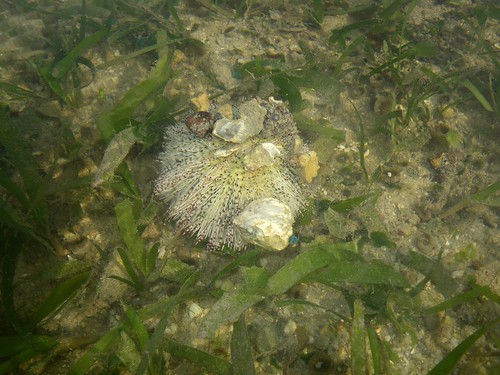
There were also several Salmacis sp. sea urchin. These spiny animals camouflages itself by trapping pieces of debris on its short spines.
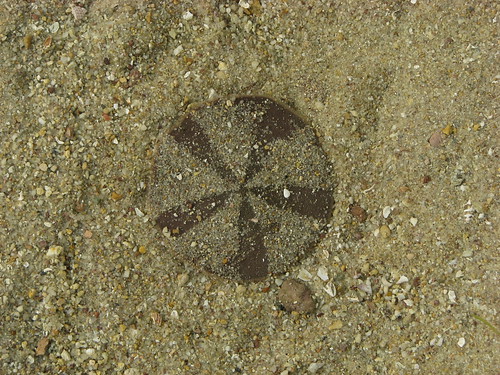
Another common resident here is the placenta sand dollar (Arachnoides placenta). Just like starfishes, these animals also have five lines of symmetry radiating from the center.
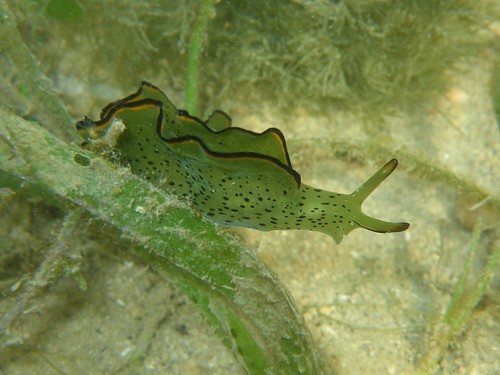
Bryopsis algae is abundance again, and together with it comes the leaf slug (Elysia ornata) which "sap-suck" on them.
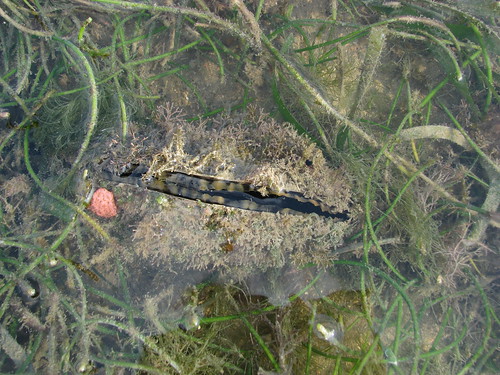
One must always remember not to take off one's booties especially here as there are lots of fan shells (Family Pinnidae) sticking out of the mud.
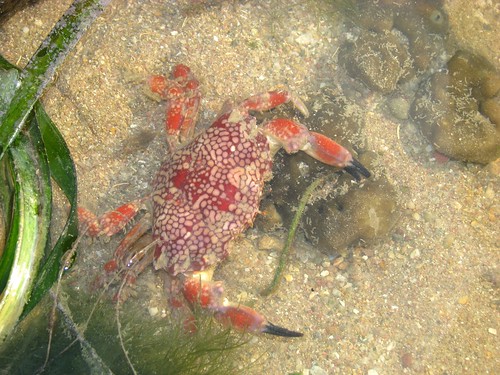
It has been awhile since I last saw this most poisonous crab, a mosaic crab (Lophozozymus pictor). Don't be mistaken that it is an edible crab, even though it might look tasty and cooked!
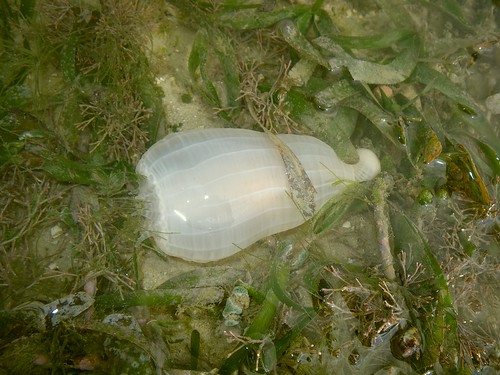
I found this weird looking anemone that seemed to be detached from its burrow. ID anyone?
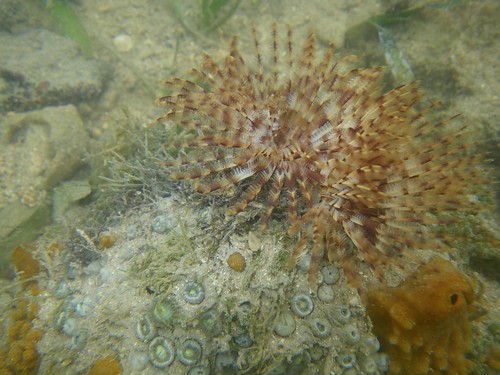
Just before we leave as the tide starts to rush in, I managed to capture this pair of intricate fan worms (Sabellastarte indica). Yes, these are actually segmented worms with their main body burrowed in tubes while extending their feathery mouthparts to filter feed.

1 comment:
Lionel is looking for the leaf slug :D
Diana
Post a Comment